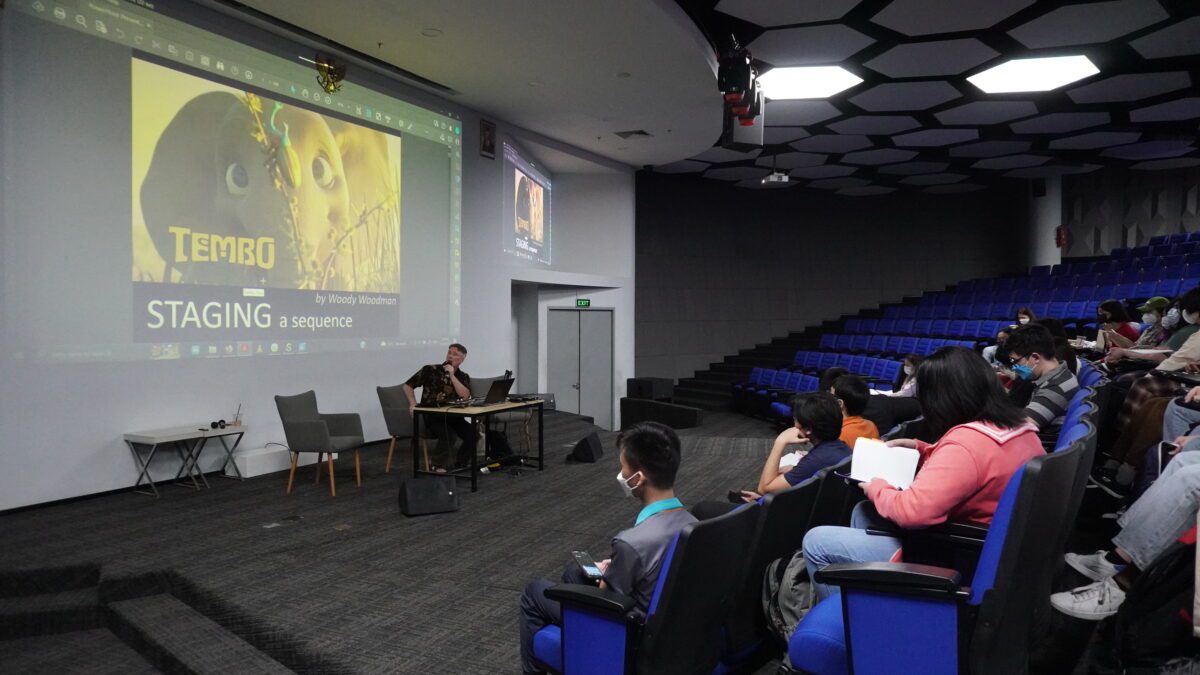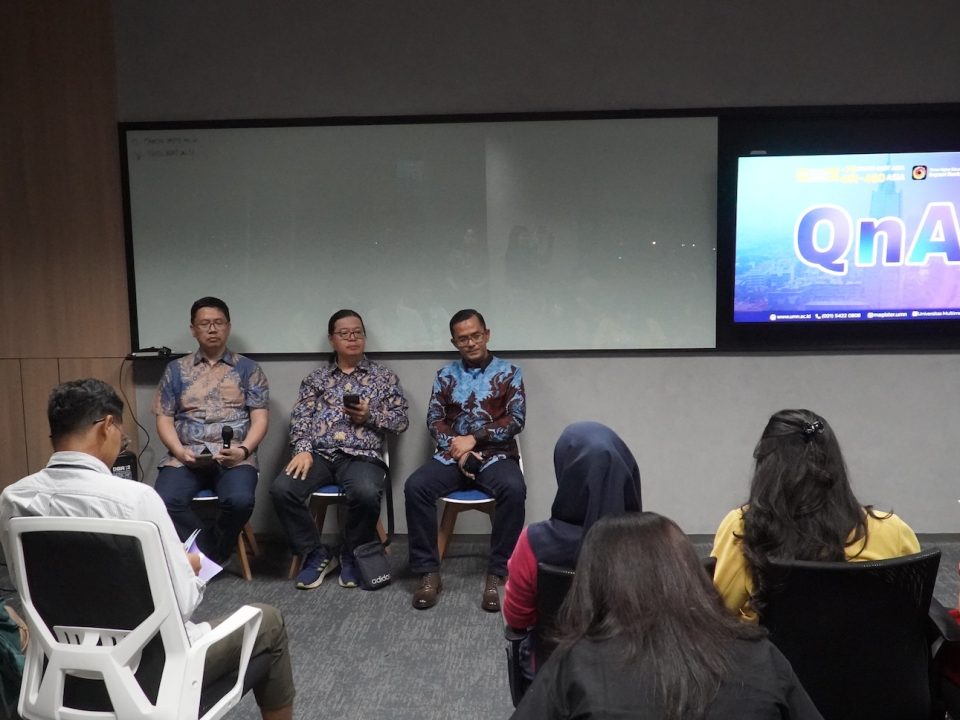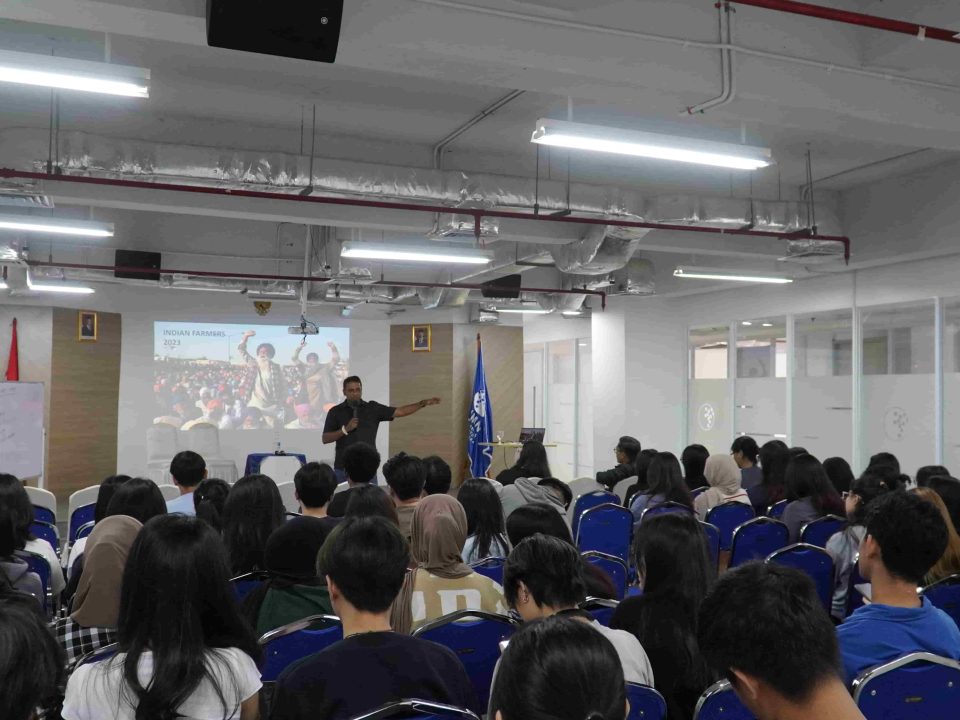
Getting acquainted with Computer Engineering
October 18, 2022
7 Career Opportunities for Hospitality Graduates, Not Just Traveling!
October 18, 2022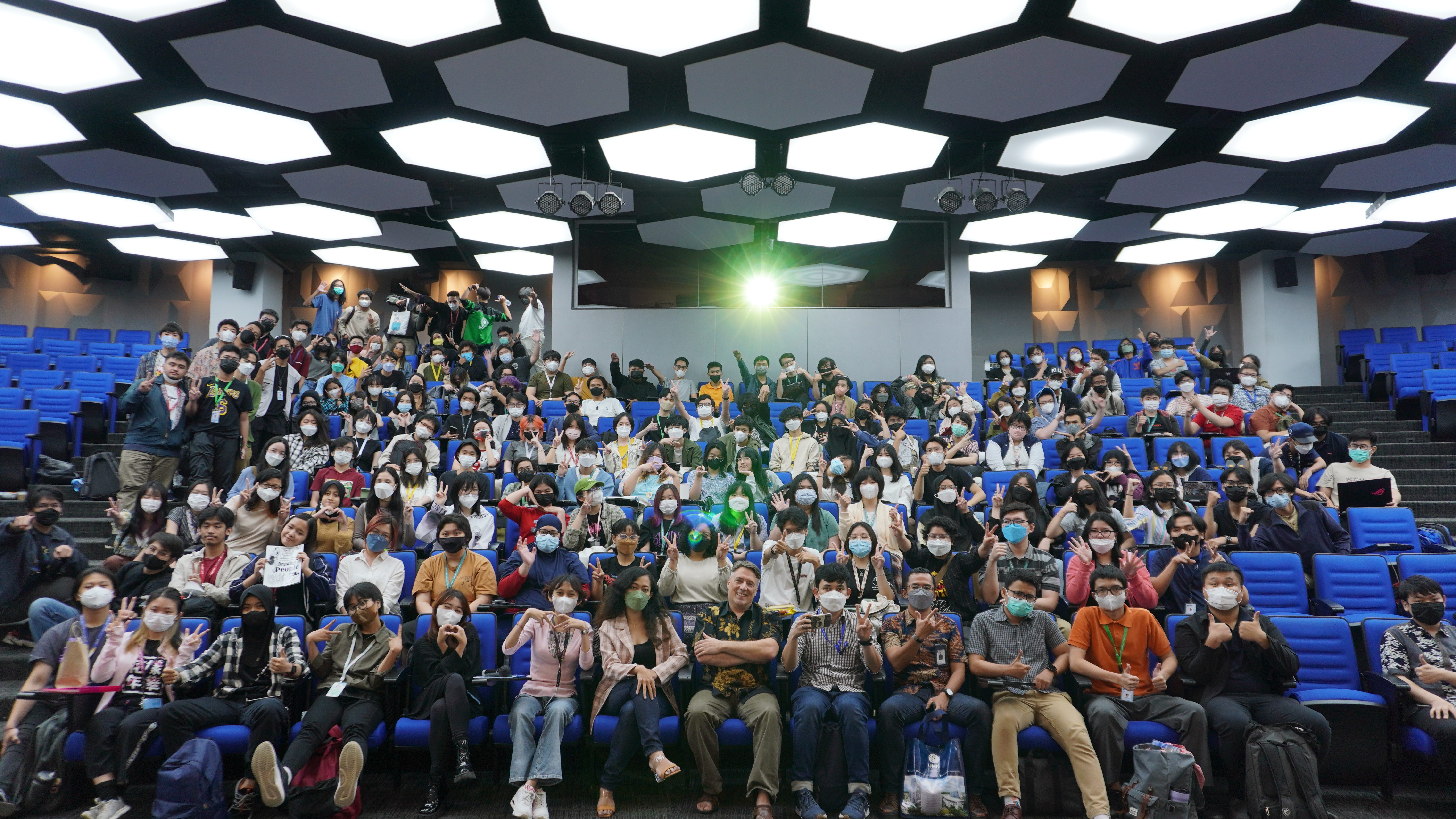 Woody Woodman visited UMN as a guest lecturer to talk about storyboarding. (Doc. UMN)
Woody Woodman visited UMN as a guest lecturer to talk about storyboarding. (Doc. UMN)
TANGERANG – The Film Department of Multimedia Nusantara University (UMN) conducted a guest lecture on the 28th of September, 2022. The lecture invited an exceptional guest, Woody Woodman, the Head of Creative Studio, One Animation. He is a notable veteran in the animation industry for clients like Disney and 20 Century Fox. This guest lecture discusses storyboarding, one crucial aspect of video production and film.
Quoting Vyond, A storyboard is a graphic representation of how your video will unfold, shot by shot. It’s made up of a number of squares with illustrations or pictures representing each shot, with notes about what’s going on in the scene and what’s being said in the script during that shot. Just like the importance of a script, a storyboard helps guide film production.
“A good tip I’ve taught my story artists; a certain approach that I want you to learn is that we have to pitch stories as story artists. So we have to get over shyness and entertain people. This is very important in the beginning,” Woody said, opening the guest lecture session.
He shared his experience working with Walt Disney where Walt will listen to the pitch. If he don’t like it and felt that the story pitched wasn’t inspiring, he would get up and leave. This is why it is essential for story artists to feel the story, pacing, energy, and drama when pitching.
Also read: Master These 6 Film Majors to Become a Cool Director.
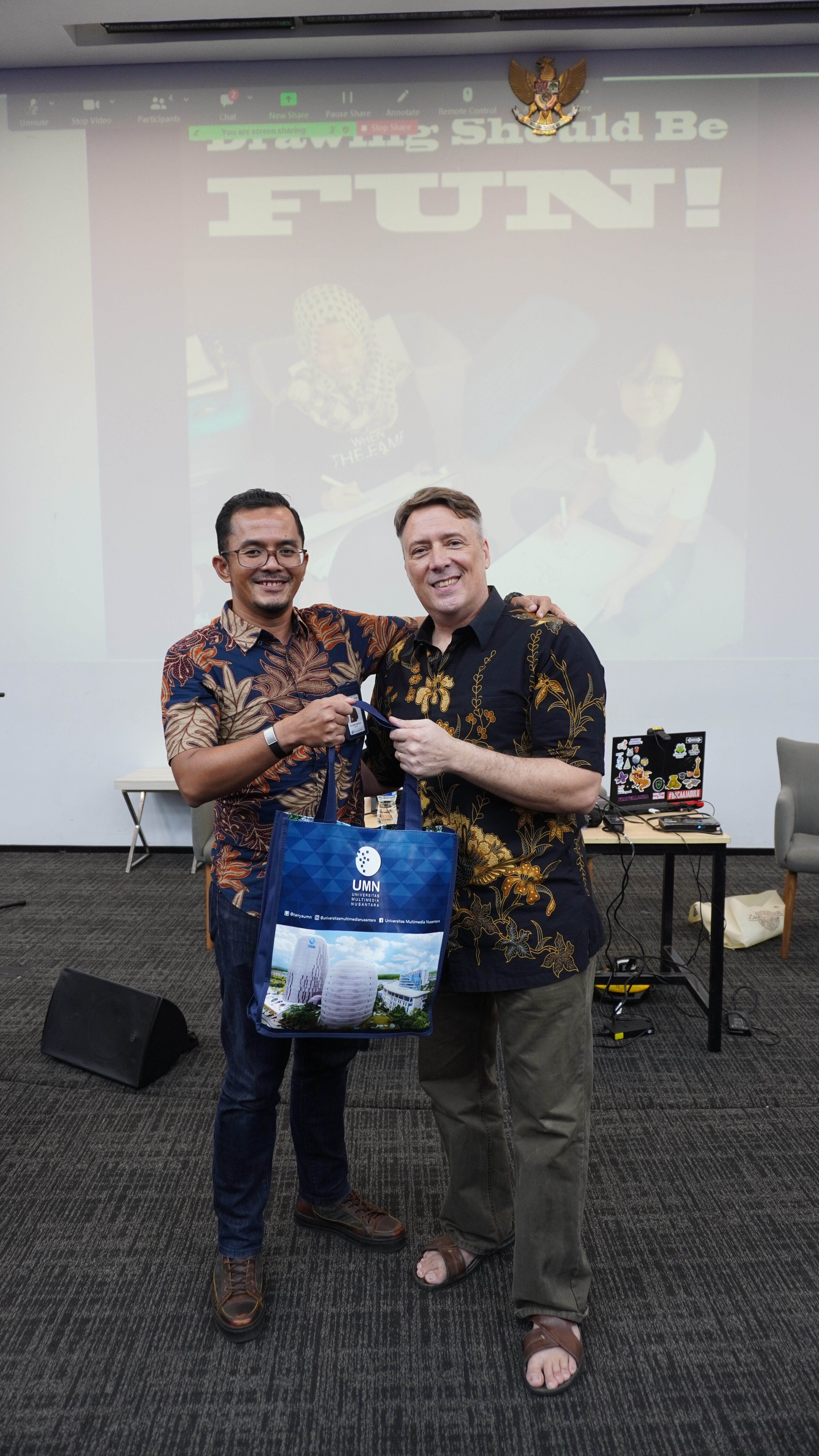 Woody Woodman is a prominent figure in the animation film industry. (Doc. UMN)
Woody Woodman is a prominent figure in the animation film industry. (Doc. UMN)
He shared that if story artists are writing a story, the director might provide a script which is an outline. But the writer developing scenes must know who wants what in the scene. In a story, everybody wants something. The hero wants the girl, but the bad guy also wants the girl; there’s a conflict.
Story artists must understand and ask these questions about the characters written: Who wants what? Why do they want it? There must be a reason why a character(s) wants something. What happens if they don’t get it? What’s at stake? Determine and identify what happens in the story’s sequence if the character(s) don’t get what they want.
“For animators, how something happens is the most important thing. As that is the performance and how they (the characters) do it. For story artists, things are a little different. We think about staging the action; that means where it is happening, how it is happening, the context, etc,” Woody shared.
Also read: Cool! UMN Makes a Film with The Indonesian Corruption Eradication Commission..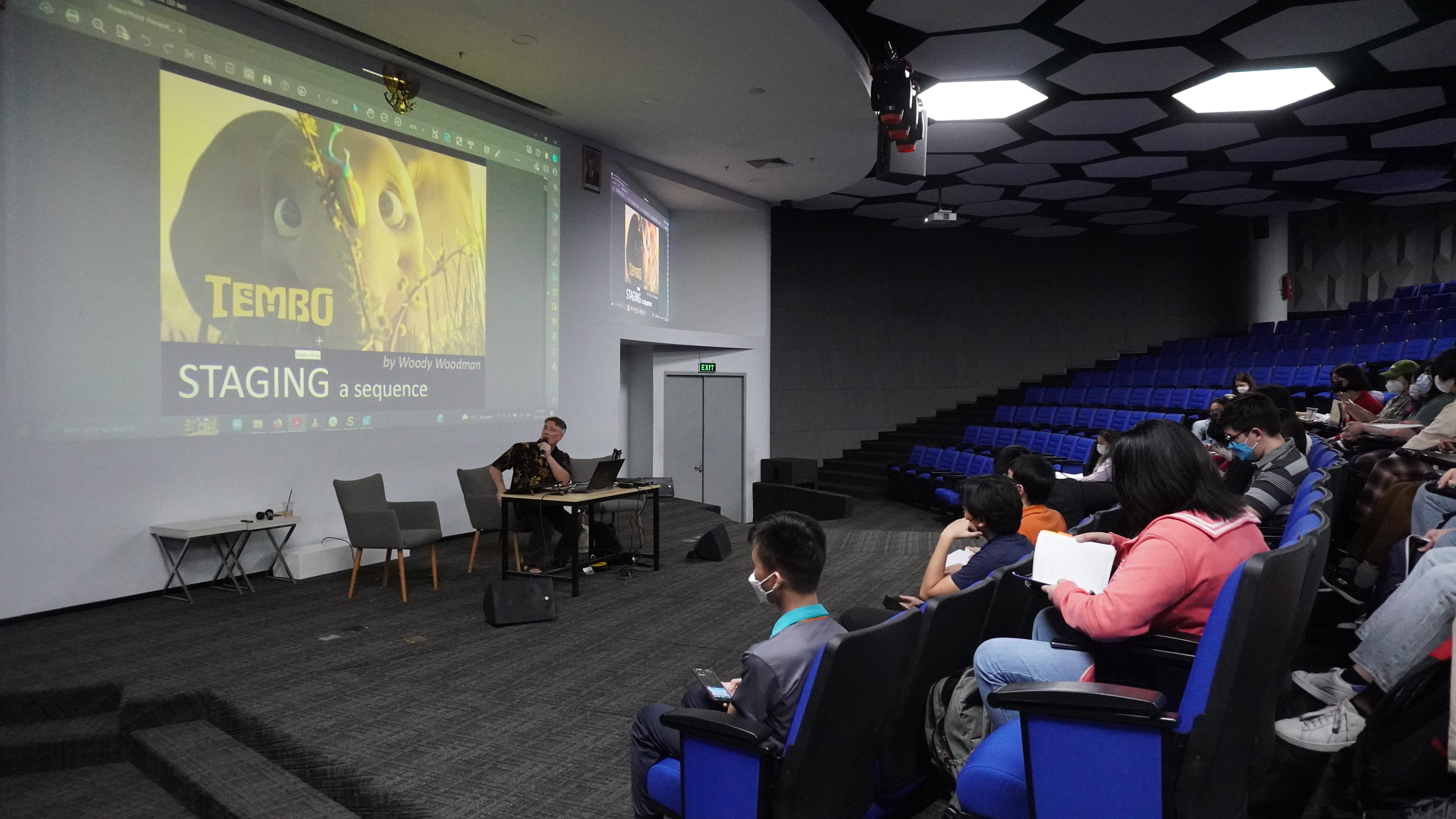 He uses one of his animation projects, “Tembo” to share some tips and stories when storyboarding. (Doc. UMN)
He uses one of his animation projects, “Tembo” to share some tips and stories when storyboarding. (Doc. UMN)
Woody also mentions the importance of subtext. “What is subtext? The subtext is between the lines. So, if you look at the script and you read the dialog, the character might be saying one thing, but its body language or its action is something different,” he explained.
In short, the subtext is the implied, unspoken meaning of something in a story. Quoting The New York Film Academy, in a play or film, the subtext is the underlying message being conveyed by a piece of dialogue. Some call it the “lines between the lines” or “the unsaid meaning.” Writers love to use subtext in scripts because it adds an extra layer of complexity to scenes and their characters.
“You must understand what makes a story, the characters, and what the characters are going through. You have to put the characters in a location, in a situation, and understand the context, where and when this is happening, and if there is subtext, how do you show that with body language and staging,” Woody explained.
Staging refers to where everything is placed in the scene, like where the character(s) stand, where and how they come into the set and leave, whether there is any camera movement, etc.
Woody said that it takes years to be a professional story artist. He recommends students watch plenty of movies and pay attention to the techniques.
Also read: Get to Know The UMN Film & Animation Program.
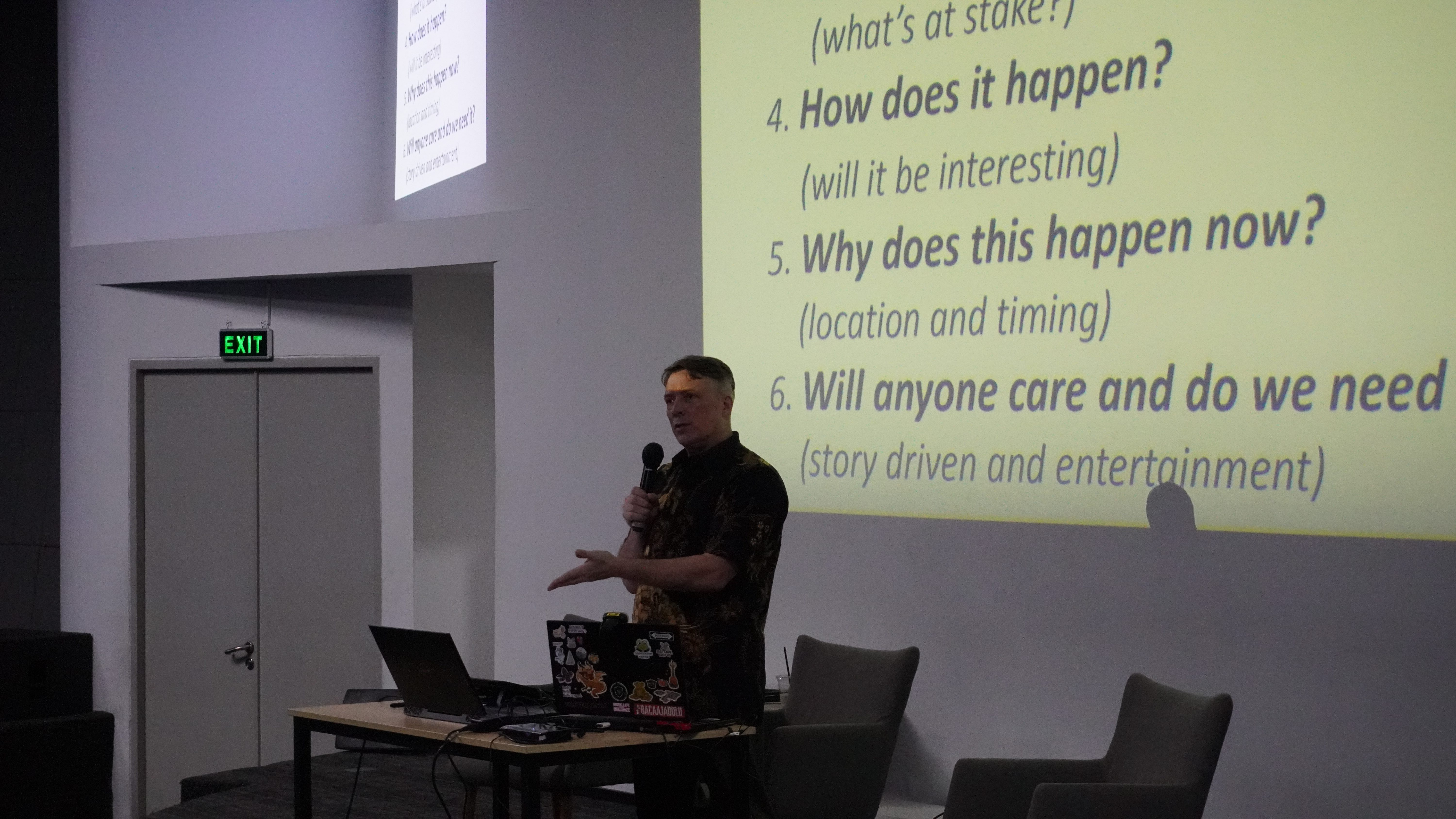 Becoming a good story artist takes plenty of practice. (Doc. UMN)
Becoming a good story artist takes plenty of practice. (Doc. UMN)
“Storyboarding takes process. You do have to make decisions. My job as a teacher, I can tell you the different techniques, I can tell you the size shots, the different camera moves, but I can’t tell you how to entertain people, how to make it funny. This is something that takes time and training,” Woody said.
He emphasized the importance of research. Before drawing anything, do plenty of research and make use of the internet, especially if you have limited experience or knowledge of life in general. You will have very little to bring to the table when you have limited general life knowledge.
“When you guys are out eating lunch, going shopping, and if you’ve got nothing to do, go places where people are and watch people. Watch people and make sure you understand the actions that you write,” Woody said.
Not only for story artists and writers, but people-watching also has plenty of benefits, even for regular people. Of course, done in a non-creepy way. People-watching can help story artists learn about people, their different characteristics, personalities, reactions, etc.
Research and observation should be done not only towards human characters but also animals and others. Like Woody’s animation project “Tembo,” with an elephant as the main character, the team behind Tembo needs to understand the characteristics of elephants. How can you write about elephants if you have no knowledge about the animal?
He also gave another important tip: to act out the character’s actions. This may not be taught in class, but Woody shared that as story artists and animators, they are also actors. This is not abnormal. Plenty of articles are shared online about how taking improv or acting classes can benefit story artists.
“You have to understand the mental, the story, the attitude, and the emotion; putting yourself in the story’s context. You learn all this by watching movies, watching people, and acting,” Woody said, closing the guest lecture session.
Also read: UMN Academics Behind the Screenplay of KKN di Desa Penari.
By Levina Chrestella Theodora
English translation by Levina Chrestella Theodora

